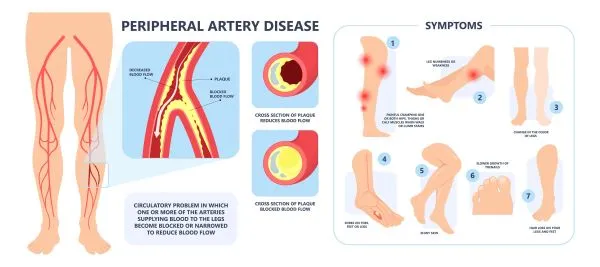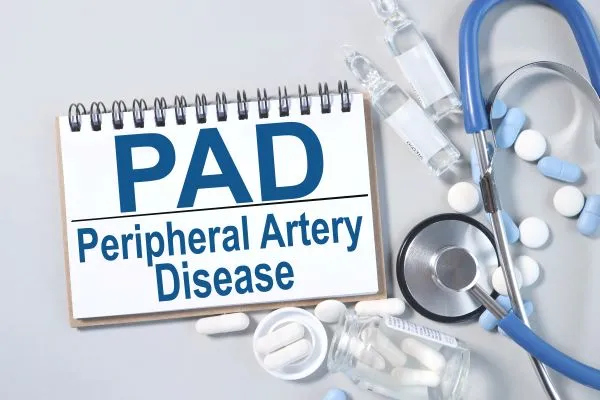Look to This Guidance to Improve Your Peripheral Artery Disease Coding
Choose different codes for atherosclerosis of bypass grafts vs. native arteries. If you find peripheral artery disease (PAD) and peripheral vascular disease (PVD) coding confusing, you’re not alone. Read on for some helpful insight on how best to maneuver this complicated space. In her HEALTHCON 2024 session “Peripheral Artery Disease: Diagnostics and Treatments of the Lower Extremities,” Elizabeth Herbert, RHIA, CPC, CDEO, CPMA, CRC, CCC, AAPC Approved Instructor, discussed all things PAD, including signs and symptoms and which ICD-10-CM codes to use. Stay tuned next month for even more advice on reporting PAD. Understand PVD Versus PAD PVD is used to describe diseases of the vascular system that occur outside of the heart, Herbert said. They most often occur in the extremities but can occur in the neck, abdomen, and pelvis, as well. There are two types of PVD: functional and organic, according to Herbert. “The functional type includes those related to flow dysfunction (not caused by an outside source),” Herbert said. “Raynaud Syndrome and Acrocyanosis are two types of functional PVD.” Organic PVD, also known as occlusive, is due to damage or defect caused by inflammation or plaque buildup, Herbert said. Common forms are venous insufficiency and arterial sclerosis. PAD is actually PVD that is in the arteries, Herbert explained. “PAD is the most common form of organic PVD, and PAD is most commonly the result of atherosclerosis — a buildup of fats cholesterol, and substances in and on the artery walls,” according to Herbert. “PAD is a type of arterial sclerosis, defined as the thickening and hardening of arterial walls, resulting in loss of elasticity.” So, PVD is a general term that can be used to refer to PAD, but PAD is a more specific form and can’t always be used as a term for PVD in patients, Herbert concluded. Keep Watch for These Signs and Symptoms Mild PAD often causes no signs, Herbert said. Many patients with PAD, up to 50 percent, are asymptomatic, and this could be partly because they’re not active enough to trigger leg ischemia. “Only about 15 percent of patients have the typical claudication, which is lower extremity pain, discomfort, fatigue, heaviness, tightness, burning, or cramping localized to the calf, thigh, hip, or buttocks that occurs during activity like walking or climbing stairs, and then resolves with rest,” she added. Up to 30 percent of patients have atypical limb symptoms, which could be a non-specific exercise intolerance, Herbert said. Additionally, patients can present with temperature differences when comparing their legs or feet, skin, discoloration, hair loss, or nail changes. Moderate or severe PAD commonly causes diminished or absent peripheral pulses and pain in the legs or feet that disturbs sleep. Note PAD ICD-10-CM Native Artery Codes Herbert also discussed some of the diagnosis codes you may see when reporting for PAD. “You’ll notice a theme among these codes,” she said. “The last character on many of the PAD codes is related to the extremity involved,” she said. “For example, you’ll see ‘1’ for the right leg, ‘2’ for the left leg, ‘3’ for the bilateral legs, ‘8’ for the arms, and ‘9’ for “unspecified extremities.” When you look at the tabular index in ICD-10-CM, PAD is referred to as atherosclerosis, Herbert explained. Your ICD-10-CM codes options for atherosclerosis involving the native arteries include the following: The ulceration codes specify the ulceration site (thigh, calf, ankle, heel, and midfoot, other parts of foot/toe, other part of lower leg, or unspecified), as well as the extremity involved (right or left), Herbert said. Don’t miss: The I70- (Atherosclerosis) category itself has instructional notes to also use an additional code to identify tobacco smoke (Z77.22), history of tobacco dependence (Z87.891), occupational exposure to environmental tobacco smoke (Z57.3), tobacco dependence (F17-), and tobacco use (Z72.0), Herbert added. Don’t Miss Bypass Graft Options On the other hand, you will look to different codes if you are reporting atherosclerosis of bypass grafts, instead of the native arteries, Herbert explained. Some of your choices are as follows:





